- Home
- Alexandre Dumas
Georges
Georges Read online
CONTENTS
TITLE PAGE
BIOGRAPHICAL NOTE
FOREWORD
INTRODUCTION
CHAPTER I
CHAPTER II
CHAPTER III
CHAPTER IV
CHAPTER V
CHAPTER VI
CHAPTER VII
CHAPTER VIII
CHAPTER IX
CHAPTER X
CHAPTER XI
CHAPTER XII
CHAPTER XIII
CHAPTER XIV
CHAPTER XV
CHAPTER XVI
CHAPTER XVII
CHAPTER XVIII
CHAPTER XIX
CHAPTER XX
CHAPTER XXI
CHAPTER XXII
CHAPTER XXIII
CHAPTER XXIV
CHAPTER XXV
CHAPTER XXVI
CHAPTER XXVII
CHAPTER XXVIII
CHAPTER XXIX
CHAPTER XXX
NOTES
ACKNOWLEDGMENTS
ABOUT THE TRANSLATOR
ABOUT THE EDITOR
THE MODERN LIBRARY EDITORIAL BOARD
COPYRIGHT
ALEXANDRE DUMAS
Alexandre Dumas, who lived a life as dramatic as any depicted in his more than three hundred volumes of plays, novels, travel books, and memoirs, was born on July 24, 1802, in the town of Villers-Cotterêts, some fifty miles from Paris. He was the third child of Thomas-Alexandre Davy de la Pailleterie (who took the name of Dumas), a nobleman who distinguished himself as one of Napoleon’s most brilliant generals, and Marie-Louise-Elisabeth Labouret. Following General Dumas’s death in 1806 the family faced precarious financial circumstances, yet Mme Dumas scrimped to pay for her son’s private schooling. Unfortunately he proved an indifferent student who excelled in but one subject: penmanship. In 1816, at the age of fourteen, Dumas found employment as a clerk with a local notary to help support the family. A growing interest in theater brought him to Paris in 1822, where he met François-Joseph Talma, the great French tragedian, and resolved to become a playwright. Meanwhile the passionate Dumas fell in love with Catherine Labay, a seamstress by whom he had a son. (Though he had numerous mistresses in his lifetime Dumas married only once, but the union did not last.) While working as a scribe for the duc d’Orléans (later King Louis-Philippe), Dumas collaborated on a one-act vaudeville, La Chasse at l’amour (The Chase and Love, 1825). But it was not until 1827, after attending a British performance of Hamlet, that Dumas discovered a direction for his dramas. “For the first time in the theater I was seeing true passions motivating men and women of flesh and blood,” he recalled. “From this time on, but only then, did I have an idea of what the theater could be.”
Dumas achieved instant fame on February 11, 1829, with the triumphant opening of Henri III et sa cour (Henry III and His Court). An innovative and influential play generally regarded as the first French drama of the Romantic movement, it broke with the staid precepts of Neoclassicism that had been imposed on the Paris stage for more than a century. Briefly involved as a republican partisan in the July Revolution of 1830, Dumas soon resumed playwriting and over the next decade turned out a number of historical melodramas that electrified audiences. Two of these works—Antony (1831) and La Tour de Nesle (The Tower of Nesle, 1832)—stand out as milestones in the history of nineteenth-century French theater. In disfavor with the new monarch, Louis-Philippe, because of his republican sympathies, Dumas left France for a time. In 1832 he set out on a tour of Switzerland, chronicling his adventures in Impressions de voyage: En Suisse (Travels in Switzerland, 1834–1837); over the years he produced many travelogues about subsequent journeys through France, Italy, Russia, and other countries.
Around 1840 Dumas embarked upon a series of historical romances inspired by both his love of French history and the novels of Sir Walter Scott. In collaboration with Auguste Maquet, he serialized Le Chevalier d’Harmental in the newspaper Le Siècle in 1842. Part history, intrigue, adventure, and romance, it is widely regarded as the first of Dumas’s great novels. The two subsequently worked together on a steady stream of books, most of which were published serially in Parisian tabloids and eagerly read by the public. In 1843, Georges appeared, the only novel in which Dumas represented racial prejudice toward people of color. He is best known for the celebrated d’Artagnan trilogy—Les trois mousquetaires (The Three Musketeers, 1844), Vingt ans après (Twenty Years After, 1845), and Dix ans plus tard ou le Vicomte de Bragelonne (Ten Years Later; or, The Viscount of Bragelonne, 1848–1850)—and the so-called Valois romances—La Reine Margot (Queen Margot, 1845), La Dame de Monsoreau (The Lady of Monsoreau, 1846), and Les Quarante-cinq (The Forty-Five Guardsmen, 1848). Yet perhaps his greatest success was Le Comte de Monte-Cristo (The Count of Monte Cristo), which appeared in installments in Le Journal des débats from 1844 to 1845. Le Chevalier du Maison-Rouge (The Knight of Maison-Rouge, 1845–1846) was also a collaborative effort. A final tetralogy marked the end of their partnership: Mémoires d’un médecin: Joseph Balsamo (Memoirs of a Physician, 1846–1848), Le Collier de la reine (The Queen’s Necklace, 1849–1850), Ange Pitou (Taking the Bastille, 1853), and La Comtesse de Charny (The Countess de Charny, 1852–1855).
In 1847, at the height of his fame, Dumas assumed the role of impresario. Hoping to reap huge profits, he inaugurated the new Théâtre Historique as a vehicle for staging dramatizations of his historical novels. The same year he completed construction of a lavish residence in the quiet hamlet of Marly-le-Roi. Called le Château de Monte Cristo, it was home to a menagerie of exotic pets and a parade of freeloaders until 1850, when Dumas’s theater failed and he faced bankruptcy. Fleeing temporarily to Belgium in order to avoid creditors, Dumas returned to Paris in 1853, shortly after the appearance of the initial volumes of Mes Mémoires (My Memoirs, 1852). Over the next years he founded the newspaper Le Mousquetaire, for which he wrote much of the copy, as well as the literary weekly Le Monte Cristo, but his finances never recovered. In 1858 he traveled to Russia, eventually publishing two new episodes of Impressions de voyage: Le Caucase (Adventures in the Caucasus, 1859) and En Russie (Travels in Russia, 1865).
The final decade of Dumas’s life began with customary high adventure. In 1860 he met Garibaldi and was swept up into the cause of Italian independence. After four years in Naples publishing the bilingual paper L’Indépendant/L’Indipendente, Dumas returned to Paris in 1864. In 1867 he began a flamboyant liaison with Ada Menken, a young American actress who dubbed him “the king of romance.” The same year marked the appearance of a last novel, La Terreur Prussiene (The Prussian Terror). Dumas’s final play, Les Blancs et les Bleus (The Whites and the Blues), opened in Paris in 1869.
Alexandre Dumas died penniless but cheerful on December 5, 1870, saying of death: “I shall tell her a story, and she will be kind to me.” One hundred years later his biographer André Maurois paid him this tribute: “Dumas was a hero out of Dumas. As strong as Porthos, as adroit as d’Artagnan, as generous as Edmond Dantès, this superb giant strode across the nineteenth century breaking down doors with his shoulder, sweeping women away in his arms, and earning fortunes only to squander them promptly in dissipation. For forty years he filled the newspapers with his prose, the stage with his dramas, the world with his clamor. Never did he know a moment of doubt or an instant of despair. He turned his own existence into the finest of his novels.”
FOREWORD
Jamaica Kincaid
Georges: Yes, it is a great joy to read this new translation of Alexandre Dumas’s long lost and forgotten novel, for it is fantastic, picturesque, almost believable, romantic, suspenseful, violent (as is to be expected when Africans, enslaved or not, are involved), sexy, naïve, and many more things besides.
And why do I think so? Here
is an explanation: My mother, in an attempt to distract my young interest in her, taught me to read, and by the time I was three and a half years old, I could do so. This caused such a sensation among everyone, including and especially me. I then had very little to read: there was the tin of Ovaltine, the tin of butter from New Zealand, a book my mother owned which described the human body and the known tropical diseases that could destroy it, the King James version of the Bible. I read the writing on the tins over and over, each time as if they were new, each time as if I had never read them before; I read the book on the body and the tropical diseases that could kill it over and over because it was illustrated and the illustrations were described and the descriptions were fabulous, and better still, not understood by me; I read the King James version of the Bible because it was all of the above as it was also many things apart from all of the above. I soon came to think of reading as “sweet” and by that I was not referring to any relationship to the five senses (I knew then there were five of them), I was thinking of something that did include them but also something that I had no real way of putting into words. At that time I could read but I was also learning to read; at that time the sensation that is reading became known to me.
Georges would have been so welcome to me then, for I would have approached it with complete freshness (reading was new, and the novel before me, Georges, was not imaginable; I was innocent of the intricate workings of the world in which I lived), taking it as it presented itself, a romance and all that comes with romance; a tale of adventure and all that comes with that; a narrative of the virtues and the virtuous explicated and exalted and then made shoddy and questionable and full of suspicion and then renounced and abandoned.
The world of Georges is an island, and that island is Eden before it was despoiled by European conquests and afterwards the only thing left of it was, well, the vegetation, especially the vegetation. The landscape of Eden is the perfect landscape for this kind of situation: it offers the best sunsets against which murderous grudges take a short rest; the unprecedented hurricane will interrupt the outcome of the most successfully planned revolt; the trees are always overbearing in fruit and the enslaved escapee may be lost among their thick trunks but will never die of hunger; that thing called Time is not the same thing that is familiar through a wristwatch. Such is the physical world of Georges. Like Eden, too, this island is a source of contests of will, only not God and Lucifer, just England or France.
Georges himself (the hero, all of this novel comes from him, is about him) is not Adam (in any case Adam is not a hero of that story), he is not an original man, he is not the first of his kind, but he has the vanity to think himself so. As a child, he suffered an insult and this insult is new, unlike any insult visited on any child before; all life from then on is experienced and interpreted through this initial childhood event. Georges is not a slave but he is descended from slaves; Georges is not white but he could pass for white; Georges is not an entirely free man (he is partly descended from the enslaved) but his manners in every way are so correct that really free men (European) cede him a place in their presence and even their society.
In the world in which I was growing up, in St. John’s, Antigua, the landscape of Georges was an everyday reality; the people inhabiting that landscape were familiar but not in real time; they were from yesterday, but as if yesterday were one hundred years ago before today.
This is, for me, the glory of Georges: I am reminded of an early pleasure and it so vividly portrays a long-ago recent past. The two are intertwined to such an extent that they are one: early, long ago, recent, past! It has been six hundred years now since Christopher Columbus left the coast of Spain and set off on a journey to find a new world, or was it to prove that the world was round, or was it to prove that people everywhere found a confounding and unrewarding curiosity in other people and places far removed from anything they knew. Within Dumas himself all of these things were true: he was a French man, and he was descended from Africans and Europeans, and he was a writer.
Writers need someone to read them, no matter what age they are writing in. More important, readers, budding or otherwise, need something to read. Georges was written over one hundred years before I was born and later learned to read. I am reading it now, and at my age it should be an old story, but an old story becomes a classic because it manages to bring up something new, something that it seems you have never heard of before.
JAMAICA KINCAID is the acclaimed author of many books, including Annie John, A Small Place, and Lucy. She lives in Vermont.
INTRODUCTION
Werner Sollors
A glaringly visual and truly suspenseful novel, Georges is a little-known gem among Alexandre Dumas’s more than three hundred volumes of fiction, drama, travel literature, and autobiography. First published in 1843, a particularly fruitful year in Dumas’s adventurous life, Georges preceded by only one year the appearance of the Les Trois Mousquetaires (The Three Musketeers) and the beginning serialization of Le Comte de Monte-Cristo (The Count of Monte Cristo)—the two novels for which Dumas was to become most famous. In fact, in his hero-genius Georges Munier, Dumas anticipated certain aspects of his best-known protagonists, d’Artagnan and Edmond Dantès, as Scott Robert Russell has shown; Georges also undergoes a long period of self-steeling preparation in which he has to learn to exert self-control and to dominate his passions in order to gain heroic stature, and he experiences injustice at the hand of lifelong enemies—in his case a father–son pair of biased, small-minded, and vindictive villains whom he later has to confront.
In the mid–nineteenth century, Romantic-Realist French fiction dominated the imagination of the Western world perhaps as much as American popular culture ruled the globe at the end of the twentieth century; Georges gives the reader all the melodramatic pleasures of that genre, as it offers vivid, truly spectacular scenes of sea battles and festivals, of a slave conspiracy and a wild pursuit, of a grand ball and a hurricane, of a horse race and a pig chase, of a duel and of gambling, of imprisonment and escape, and of a beautiful bathing maiden saved at the last second from the jaws of a vicious shark. Georges appeals to our wish for hair-raising suspense and swashbuckling adventure and surprises us with a dramatic rescue at the last moment by a pirate in disguise. It rewards our sentimental expectations with the love story between Georges and Sara de Malmédie as well as with the tenderly drawn bonds among the three men in the Munier family. With its richly rendered setting on the île de France, it gratifies exotic-picturesque fantasies of a romantic island by presenting a bird’s-eye view of verdant mountains under clear and starry skies, and by letting the reader almost literally feel the sea breezes redolent with floral perfume that are drifting through bamboo blinds. An aviary bustles with turtledoves, fondijalas, and flycatchers; the flora is a mix of Parisian and tropical flowers: tuberoses, Chinese carnations, Spanish jasmine, anemones, Indian roses, and the colorful Cape amaranth as well as francopenny and tamarind trees.
The teeming mass of humanity populating the novel includes heroes and villains, virgins and courtesans, allies and enemies, governors and captains, masters and slaves, brave hearts as well as cowards and traitors; the cast of major and minor figures comes from a broad spectrum of the world’s population. Among the Africans are Yoloffs and Mozambicans, Malgaches and Lascars; Laïza and Nazim are Anjouans from the Comoros Islands; there is the Chinese trader Miko-Miko, happy to find out that Georges, who was raised by a Chinese nursemaid, can speak his language; among Europeans, there are French and English characters as well as a seemingly Dutch captain. Georges goes to France and Italy, and because travels to the Orient were at that time “all the rage,” he also visits Greece, Turkey, Asia Minor, Syria, and Egypt and meets Muhammad Ali just before Ibrahim Pasha quelled the Wahhabite rebellion in the Arabian peninsula. In the particularly colorful section on the Yamsé festival on île de France the narrator also explains the division between Shiites and Sunnis that lies behind the very name of that feast. Dumas’s no
vel thus offers a broad and, one could even say, global perspective of a small place, and with his knowledge of French, English, Arabic, and Chinese, Georges embodies the virtues of the cosmopolitan hero that such a world would seem to require. Dumas’s broad topographic reach should not mislead the reader to assume that all of the novel’s place-names are real: Googling Antonio the Malay’s supposed birthplace, “Tingoram,” for example, yields only references to Dumas’s Georges.
The novel also gives a precise sense of history and embeds its plot in the transformation of the island, connecting it with the larger historical changes that have taken place from the period of the Revolution and Napoleon to around 1824, the time in which the bulk of the novel is set. Île de France was first colonized by the Dutch, then became French, and changed its name back to Mauritius after the sea battle of 1810 (the subject of chapter 2) that brought the island first into British hands. The beginning of the novel is thus set thirty-three years before its date of publication, and Dumas partakes in the vogue of historical fiction to which he explicitly alludes when he mentions Sir Walter Scott. Like other participants in the new postrevolutionary vogue of the historical novel, Dumas mixed historical personages (Captain Willoughby, for example) with imaginary ones (Lord Murray) and was eager to trace the changes that divided a “then” from a “now.” The way in which the novel twice identifies the island’s capital, “Port Louis, formerly Port Napoleon,” thus alerts the reader to a past that has given way to a different present, a present that in turn is destined to become past. The French defeat at Mauritius is a step toward Napoleon’s abdication, yet Napoleon remains a touchstone not only for the dramatic changes Dumas’s world had undergone since 1789 but also for the inspiring role played by the self-crowned emperor-genius who spread the ideals of the French Revolution around the world. It is thus no coincidence that Georges attends the Collège Napoleon in Paris.

 The Count of Monte Cristo, Illustrated
The Count of Monte Cristo, Illustrated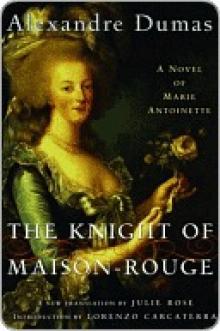 Knight of Maison-Rouge
Knight of Maison-Rouge![The Three Musketeers - Alexandre Dumas - [Full Version] - (ANNOTATED) Read online](http://i1.bookreadfree.com/14/the_three_musketeers_-_alexandre_dumas_-_[full_version]_-_annotated_preview.jpg) The Three Musketeers - Alexandre Dumas - [Full Version] - (ANNOTATED)
The Three Musketeers - Alexandre Dumas - [Full Version] - (ANNOTATED)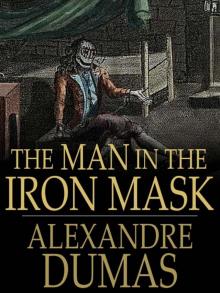 The Man in the Iron Mask
The Man in the Iron Mask The Count of Monte Cristo (Penguin Classics eBook)
The Count of Monte Cristo (Penguin Classics eBook)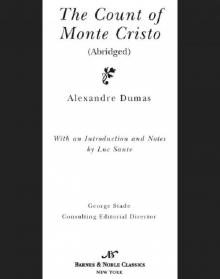 Count of Monte Cristo (abridged) (Barnes & Noble Classics Series)
Count of Monte Cristo (abridged) (Barnes & Noble Classics Series) The Women's War
The Women's War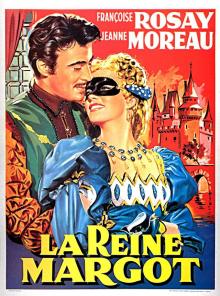 La reine Margot. English
La reine Margot. English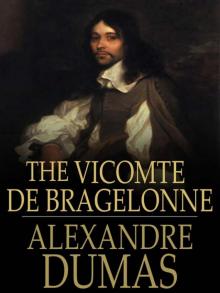 The Vicomte de Bragelonne
The Vicomte de Bragelonne__english_preview.jpg) La dame aux camélias (Novel). English
La dame aux camélias (Novel). English The Count of Monte Cristo
The Count of Monte Cristo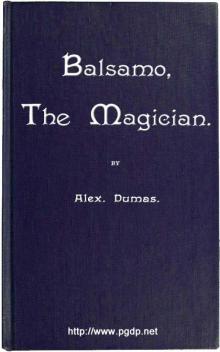 Balsamo, the Magician; or, The Memoirs of a Physician
Balsamo, the Magician; or, The Memoirs of a Physician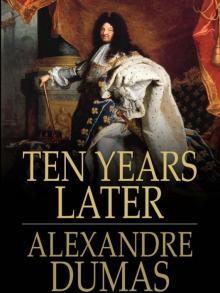 Ten Years Later
Ten Years Later The Romance of Violette
The Romance of Violette The Mesmerist's Victim
The Mesmerist's Victim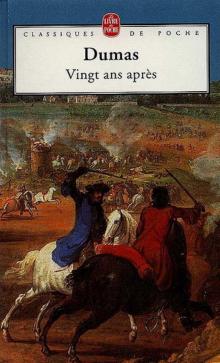 Vingt ans après. English
Vingt ans après. English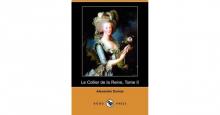 Le collier de la reine. English
Le collier de la reine. English Taking the Bastile; Or, Pitou the Peasant
Taking the Bastile; Or, Pitou the Peasant The Hero of the People: A Historical Romance of Love, Liberty and Loyalty
The Hero of the People: A Historical Romance of Love, Liberty and Loyalty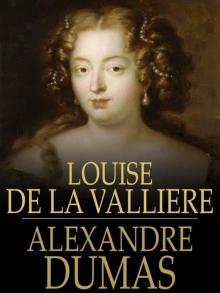 Louise de la Valliere
Louise de la Valliere Les Quarante-cinq. English
Les Quarante-cinq. English Ange Pitou (Volume 1)
Ange Pitou (Volume 1)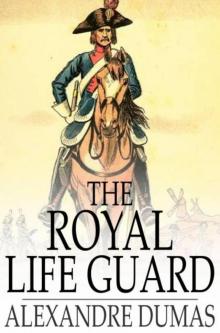 The Royal Life Guard; or, the flight of the royal family.
The Royal Life Guard; or, the flight of the royal family.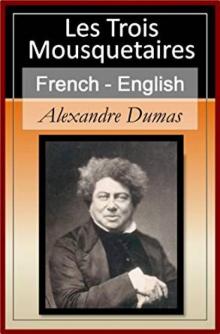 Les trois mousquetaires. English
Les trois mousquetaires. English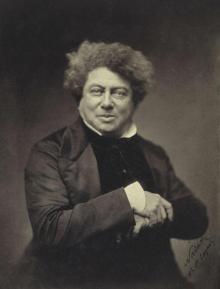 Une fille du régent. English
Une fille du régent. English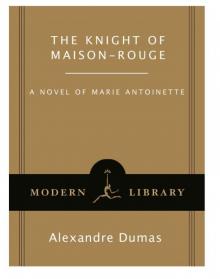 The Knight of Maison-Rouge
The Knight of Maison-Rouge The Count of Monte Cristo (Unabridged Penguin)
The Count of Monte Cristo (Unabridged Penguin) Ange Pitou
Ange Pitou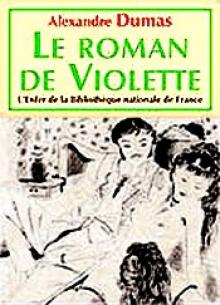 The Romance of Violette (vintage erotica)
The Romance of Violette (vintage erotica)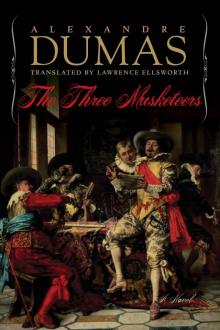 The Three Musketeers
The Three Musketeers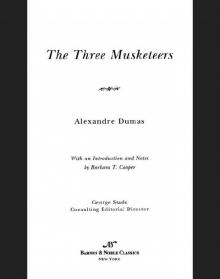 Three Musketeers (Barnes & Noble Classics Series)
Three Musketeers (Barnes & Noble Classics Series)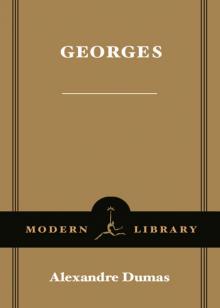 Georges
Georges Man in the Iron Mask (Barnes & Noble Classics Series)
Man in the Iron Mask (Barnes & Noble Classics Series)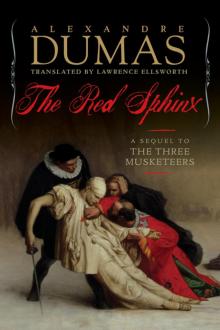 The Red Sphinx
The Red Sphinx